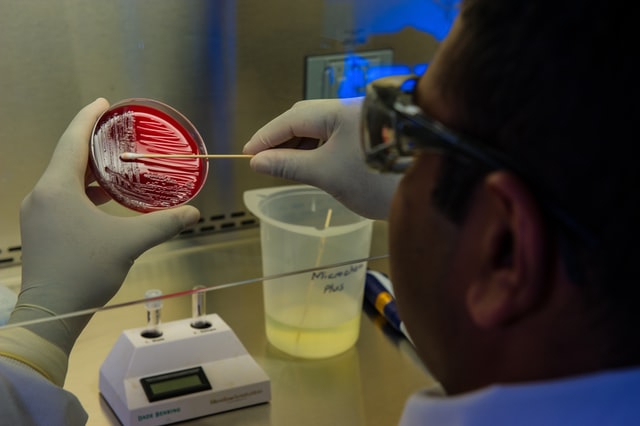I have been working with food intolerances and food allergies for close to 10 years, even longer if you count working with my own.
I get asked a lot of questions on this topic so I will go through the differences between a food intolerance/sensitivity vs food allergy, what symptoms would indicate testing, the different ways to test, the approximate current costs involved and what to do if your test result shows a food intolerance/allergy.
What is a food intolerance/sensitivity?
IgG is the major antibody found in blood serum. IgG-mediated reactions to food antigens may be delayed by several hours or days (up to 28 days!), whereas IgE food antibody reactions (which is a true allergy) are immediate – usually within 20 minutes to 1 hour.
IgG food sensitivity/intolerance is triggered by the binding of compliment to IgG food antigen complexes which causes an inflammatory response. This is a delayed hypersensitivity reaction.
IgG food antibodies remain for a far longer time than IgE antibodies.
IgA antibodies are one of the most crucial antibodies being the bodies’ first line of defence against viruses and bacteria.
IgA antibodies may be raised against specific foods when the lining of the intestinal tract or the mucous membrane become inflamed or damaged. Elevated IgA to specific foods can be an indicator of damage to the mucous membranes in the gut. These IgA sensitivities can lead to IgG sensitivities which then can cause more obvious symptoms. People with Crohn’s disease or ulcerative colitis, or those with suspected leaky gut may benefit from testing IgA food reactions.
What is a food allergy?
IgE food allergy is a pathological reaction of the immune system triggered by eating a food protein antigen. Food allergy is distinct from food intolerance as it arises from immune system dysregulation, whereas intolerance arises from an inflammatory response.
IgE food allergy causes the release of histamine, producing an immediate hypersensitivity reaction usually immediately after eating the offending foods.
Some of the common foods that people have an IgE-mediated reaction to in Australia are nuts, milks, eggs and seafood to name a few.
What symptoms or signs can indicate you have a food intolerance?
The most common symptoms that can indicate a food intolerance are (you only need one, not the whole list):
- Headaches/migraines;
- Nausea;
- Seizure;
- Hyperactivity;
- Fatigue;
- Bloating;
- Mood changes;
- Dark circles under the eyes
Actual conditions that can indicate food intolerance include, but are not limited to:
- Irritable bowel syndrome (IBS including SIBO),
- Eczema;
- Asthma;
- Autism;
- ADHD;
- Cystic fibrosis;
- Rheumatoid arthritis;
- Gallstones;
What symptoms or signs can indicate you have a food allergy?
Eating even very small amounts of allergenic foods can trigger symptoms such as:
- Gastrointestinal disorders eg mouth tingling, mouth and face itching and/or swelling, as well as nausea, abdominal pain and/or vomiting, diarrhoea;
- Urticaria (hives), skin flushing, skin itching, facial swelling;
- Wheezing and/or airway inflammation which can range in severity from mild to life-threatening (anaphylaxis);
- Asthma;
- Headaches/migraines;
- Eczema;
- Fatigue
What can cause these sensitivities/allergies?
There are many possible reasons you can become sensitive to foods and the contributing factors include unbalanced or inadequate diets, enzyme deficiencies, stress, genetic predisposition, infections and inflammation, chemicals, drugs, environmental pollutants and toxins
Research has shown that these factors may weaken both digestion and the protective defences in our intestinal tract allowing for allergens to easily challenge an exhausted immune system.
Studies have also shown that Vitamin D deficiency can play a role in food allergy development.
How do you test for a food allergy or intolerance?
Blood testing is the most reliable method of testing. With IgG and IgA testing you can do that test at home with a finger prick filling in a card with blood (blood spot). For IgE testing it does have to been done via a blood draw at pathology. Or if you feel you aren’t up to the task of doing a blood spot at home, you can opt for a blood draw for your IgG/IgA test. You can test IgG, IgA and IgE all at the same time, or just do whichever one is most applicable.
If your child is under 2 years of age and you want to find out if they have a food intolerance/allergy, I test mum which gives a good indicator of the foods the child is reacting to. If the child is older than 2, you have the same option as above to do blood spot or blood draw on the child. Children are often easier to use their heel for the blood spot over a finger prick if doing at home.
How much does it cost?
This really depends on each individual person as there are a number of test options to choose from. This depends on your symptoms and how varied your diet is. Food intolerance tests can test anywhere from 22 foods up to 208 foods. Food allergy tests for a lesser amount of foods (the most common ones), and is a slightly more expensive process. Current test pricing ranges from $341 up to $1,457 (this is the most extensive test on the market – testing 208 IgG/IgA foods plus 27 IgE foods and is rarely necessary).
What do you need to do if you am intolerant or allergic to any foods?
The first thing is taking out that offending food from the diet. This time frame depends on how intolerant you are or whether it is an actual food intolerance or food allergy.
Food intolerances can require that food be removed anywhere from a 3-12 month period. Some people find they need a longer timeframe away from that food, but most commonly the food can come back into the diet on a rotational basis (once every 2-3 days). Gut healing work and reducing inflammation is a large part of reducing that intolerance.
Childhood food allergies can be outgrown as the child gets older and their immune system gets stronger, in particular allergies to cow’s milk, egg, wheat and soy. Peanuts, tree nuts and shellfish allergies can continue into adulthood. More adults are developing allergies, whereas allergies were originally thought of only in children.
Food allergies can be dealt with in a similar way to food intolerances, but there is more focus on improving the immune system and a longer time frame of having that particular food out of the diet. Some food allergies can be for life.
Studies have shown that simply taking the offending foods out of the diet has shown to alleviate symptoms associated with non-coeliac gluten sensitivity and food sensitivity-induced atopic conditions such as eczema, reduce the frequency of migraine headaches, decrease the occurrence of diarrhoea, decrease failure–to-thrive among children with cystic fibrosis, reduce symptoms of IBS, decrease stool frequency in Crohn’s disease, prevent seizures and hyperkinetic behaviour in children with epilepsy and improve kidney function in glomerulonephritis. Food elimination diets also have shown promise for the improvement of behaviours linked with ADHD.
If you would like to find out more about what testing may be appropriate for you or your child, then contact me to book in a consult – megan@balancingnutrition.com.au or 0417 679 287.
*References available upon request
Megan Crockart is a qualified Holistic Nutritionist & a self-confessed foodie! Megan has a special interest in working with individuals with allergies, food intolerances, SIBO, eczema, pre- & post-natal health & children’s health.
Balancing Nutrition
To book a consultation with Megan please click here.



